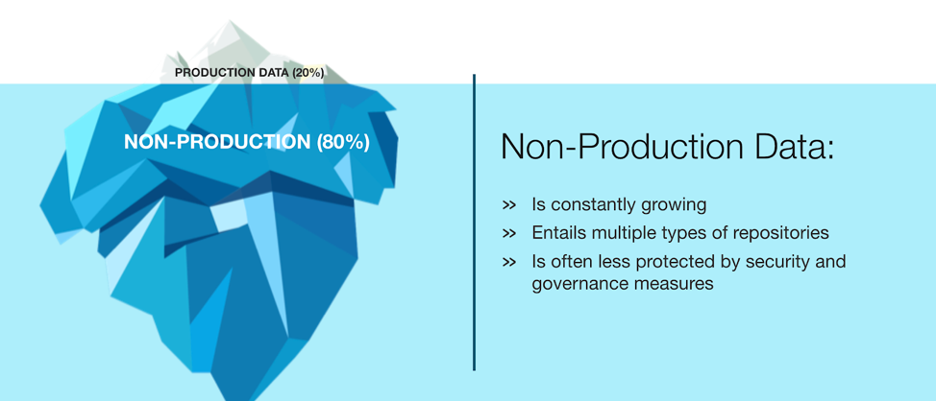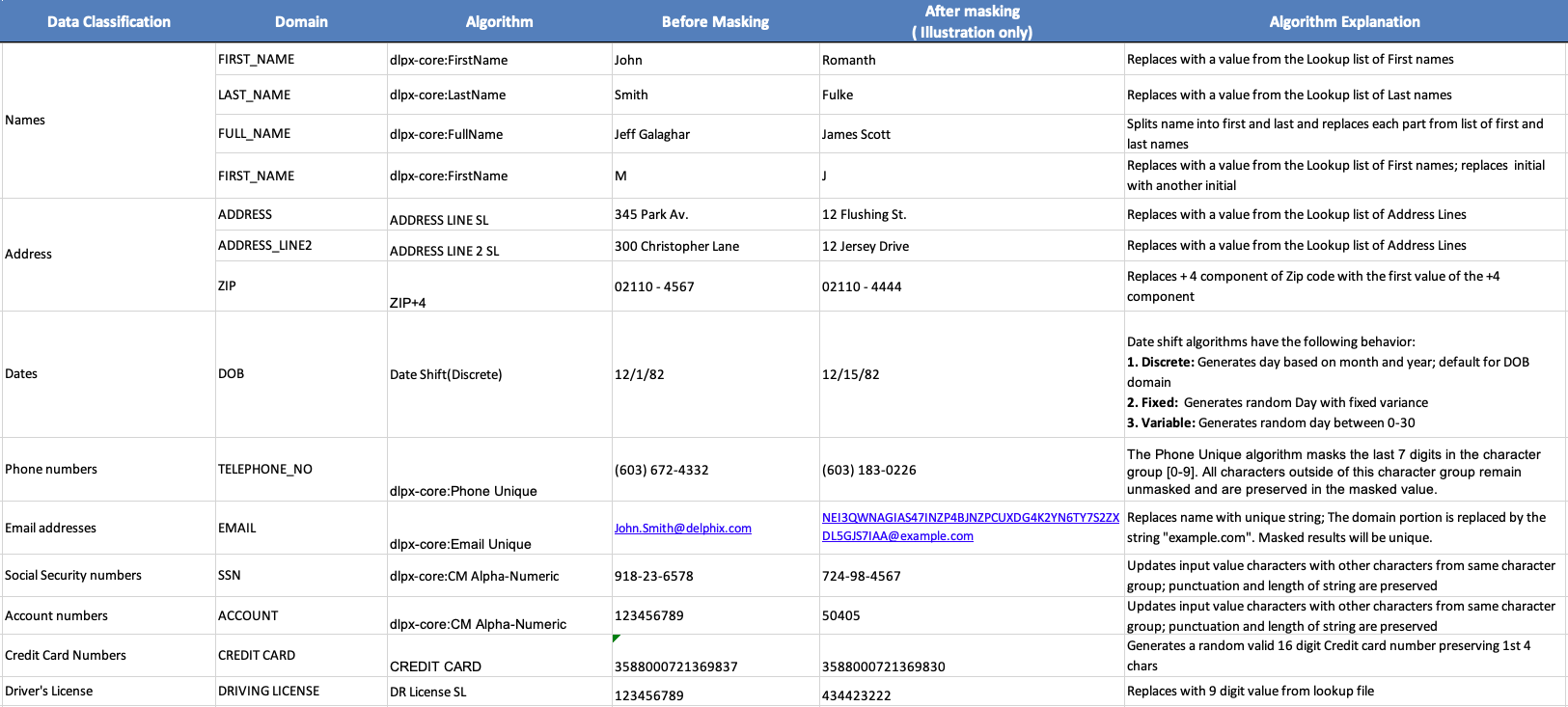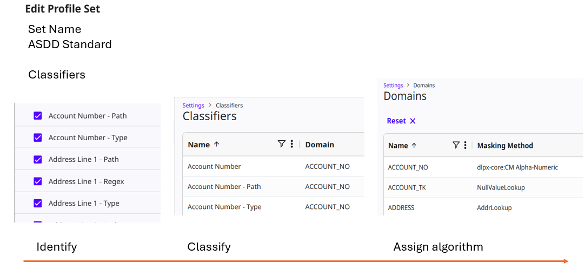Blog
October 9, 2025
How Policy-Driven Data Obfuscation Solves Enterprise Data Security Challenges
Security & Compliance,
Data Management
Data obfuscation offers a powerful solution to today's enterprise security challenges — and the stakes couldn't be higher. IBM reports that the global average cost of a data breach crossed $4.88 million in 2024. And 60% of the organizations we surveyed for our State of Data Compliance and Security Report have experienced data breaches or theft in non-production environments — up 11% from last year.
A policy-driven approach can protect your sensitive data while keeping your business running smoothly. Understanding the right data obfuscation strategy can help you make better decisions for your company and avoid becoming another costly statistic.
Let's explore how it works.
Table of Contents
- First, What is Data Obfuscation?
- Why Is Data Obfuscation Important?
- Examples of Data Obfuscation
- Challenges of Data Obfuscation at the Enterprise Level
- The Best Approach to Data Obfuscation: Policy-Driven Masking
- How Data Obfuscation Works with Perforce Delphix
- Delphix Data Masking Simplifies Data Obfuscation
First, What is Data Obfuscation?
Data obfuscation transforms confidential or sensitive information to render it useless to bad actors while still maintaining usability for internal purposes.
This method supports legitimate uses, preserves data structure, and reduces sharing risks. Obfuscation also ensures data security while keeping the information functional for testing and development.
Common Obfuscation Techniques
Data obfuscation includes several techniques to protect sensitive information:
- Data masking replaces real data with fictitious but realistic values. This is the most common approach for testing environments.
- Tokenization swaps sensitive data with random tokens. Tokenized data can be restored (re-identified) to its original values using the same masking engine. Alternatively, it can be restored with another engine, as long as the algorithms are synchronized with the original.
- Encryption scrambles data using mathematical algorithms. You can unscramble the data with the right key.
Each method has its place, but masking works best for most development and testing needs. Learn more about data masking techniques and strategies.
Back to topWhy Is Data Obfuscation Important?
Most enterprise software teams focus on securing their main production environments. But this leads them to overlook one of the most concerning security issues: their non-production environments.
Non-production environments are important for software teams to develop, stage, and test application changes before deploying them to production. Unknown to many, the sheer number and volume of these lower environments are actually far larger than the highly visible production environments.
For every dataset in production, companies maintain multiple copies in non-production. In fact, according to that same report, almost half (45%) of organizations keep 3-10 copies. These environments often operate behind the scenes, making them an overlooked yet significant part of IT operations. As a result, they pose a substantial and often underestimated risk.
Every time sensitive data leaves the production zone, your risk goes up.

Examples of Data Obfuscation
Let's look at how different industries use data obfuscation:
Healthcare
A hospital needs to test their patient portal. Instead of using real patient records, they replace actual names like "Angie Adams" with fake ones like "Catilyn Carson." Medical record numbers get scrambled, too, but the data still works for testing.
Financial Services
A bank wants to test their loan application system. They replace real Social Security numbers with fake ones that follow the same format. Credit scores get changed to random but realistic numbers. The test data works perfectly, but no real customer information is at risk.
Retail
An online store tests their recommendation engine. Real customer purchase histories get replaced with fictional ones. For example, "John Smith bought running shoes and protein bars" becomes "Alex Williams bought running shoes and protein bars." The patterns stay the same, but the personal details are gone.
Back to topChallenges of Data Obfuscation at the Enterprise Level
Data obfuscation at the enterprise level isn't always easy. Here are some challenges:
| Challenge | Problem | Impact |
| Speed | Manual masking/obfuscation takes forever. | Teams spend weeks or months preparing test data instead of focusing on more important work. |
| Data Quality vs Security | Hard to balance realistic data with protection. | Make data too fake and tests don't work. Keep it too real and you risk exposing sensitive information. |
| Scalability | Massive datasets across the enterprise. | Managing obfuscation across thousands of databases and files becomes expensive and complex. |
| Compliance | Different teams use different approaches. | Makes it hard to prove compliance during audits. |
Data Security in 2025: Are Non-Production Environments Your Biggest Risk?
A policy-driven data obfuscation strategy is essential for closing security gaps. Our latest research shows that 84% of organizations allow data compliance exceptions in non-production environments. Exceptions like this put your organization at risk.
So, why does it happen? Learn what we found from our survey of 280 global enterprise leaders. Access the 2025 State of Data Compliance and Security Report for expert analysis.
Find Masking & Compliance Insights
Back to topThe Best Approach to Data Obfuscation: Policy-Driven Masking
The best approach to data obfuscation is through policy-driven data masking. Unlike manual processes that require teams to painstakingly scan data and metadata and assign appropriate masking algorithms, a policy-driven approach automates and streamlines the entire process.
With Delphix, organizations can define security policies in the profiler. This then automatically scans the data, identifies sensitive information, and applies the appropriate masking algorithms based on the predefined policies. The copies of data created get masked automatically, so testing and development teams are not exposing sensitive information.
Policy-driven masking is stronger than other approaches like encryption or homegrown scripts. An advanced, powerful PII data masking technology can do the following:
- Automatically identify sensitive data: No more manual hunting through databases.
- Irreversibly protect the data: Once masked, it can't be restored to its original, sensitive state.
- Make testing feasible: Provides realistic but fictitious data with zero value to thieves and hackers.
- Offer flexibility: Extensibility features let businesses customize their solution for various data sources.
- Preserve relationships: Maintains referential integrity for important data connections.
How Data Obfuscation Works with Perforce Delphix
Perforce Delphix makes it easier to adopt a policy-driven data obfuscation approach. Here's how it works with the Delphix DevOps Data Platform through our 5-step process.
Prior to beginning the onboarding process it’s recommended to document sensitive data types that are in scope for masking. This information should be communicated to application teams and data owners. The document can be updated with additional information on the masking process and provided to stakeholders. Here’s an example:

The 5-Step Process for Onboarding Applications to the Delphix DevOps Data Platform
Step 1: Identify
First, run profiling to find PII and create your initial inventory of sensitive data. This planning stage sets up everything that follows.
Delphix scans your data using smart classifiers with Java regular expressions to find sensitive data by scanning column names and column data in the database.
Start with a column-level metadata search first — it's much faster than data sampling. If your database uses uncommon column names, you might need to perform a data level scan. Many teams use both techniques together.
Delphix data masking provides over 100 ready-to-use classifiers that automatically assign a domain (PII type) and algorithm (masking method) to each sensitive column found.

Step 2: Select
Review the profiling results. Adjust settings and run again if needed.
Export your results to a CSV and share it with your application teams. They can confirm that the right data got flagged and suggest any changes needed. The profiler can be run repeatedly with additional (or fewer) classifiers to rebuild the masking inventory. The CSV export is supported within the Continuous Compliance user interface. (See sample CSV below.)

It's best to start with a smaller set (10 or fewer) of your most sensitive domains, evaluate the results, then expand from there. This iterative approach ensures accuracy before moving to the masking phase.
Step 3: Mask/Validate
Build your masking process and have application teams validate the results. Repeat as needed.
Group your classifiers into profile sets that match your security policy. Delphix masking engines come pre-configured with several common use case profile sets, including the advanced ASDD Standard. These profile sets contain common domains for each use case.
Work with your application teams to validate that the masked data works properly for testing and development needs. Run test cycles to ensure applications function correctly with obfuscated data while maintaining referential integrity across related tables.
Step 4: Implement
Set up your final masking schedules and automation.
Deploy your finalized masking policies across the enterprise. Configure automated schedules to ensure new data environments are consistently masked according to your established policies, reducing manual effort and human error.
Step 5: Sustain
Create regular checkpoints to certify and maintain your compliance over time.
Establish ongoing processes to ensure your data obfuscation continues meeting compliance requirements:
- Set up regular audits to verify masking policies are working as expected and haven't been bypassed.
- Monitor for new data types or sources that need to be added to your obfuscation rules.
- Create documentation and training programs to ensure team members understand and follow established data protection procedures.
- Schedule periodic reviews with compliance teams to validate continued adherence to data privacy regulations.
Delphix Data Masking Simplifies Data Obfuscation
Data obfuscation doesn't have to be complicated. With the right policy-driven approach, you can protect sensitive data while keeping your development and testing processes running smoothly.
The key is starting with a clear plan, using automated tools like Delphix, and working closely with your application teams. Teams using Delphix develop applications 58% faster and protect 77% more data and environments through automated masking.*
Get the strong security your teams need without slowing down development.
Related blog >> What Is Delphix?
Real-World Delphix Data Masking Success Stories
- Choice Hotels used Delphix to ensure sensitive guest data was protected across all environments, safeguarding PII and PCI data while maintaining compliance.
- For Worldpay, exporting, masking, and importing data into lower environments use to take up to 28 days. Now it takes just 4, and data is masked consistently across all 12+ environments.
- Mizuho Securities has 5 database administrators looking over 800 systems, so manual masking would be a massive bottleneck. They use Delphix to automate data masking, reducing data delivery by 90% and saving $700k a year.
Comply with Privacy Laws and Protect Against Breach
Effective data obfuscation starts with centralized policies. With Delphix, teams centrally define masking policies and deploy them across the enterprise for compliance with key privacy regulations such as GDPR, CCPA, HIPAA, and PCI DSS. And because obfuscation transforms sensitive information into safe, fictitious data, Delphix neutralizes breach risk in non-production environments that contain vast amounts of data that must be protected from cyberthreats.
Integrate Data Masking and Data Delivery
The Delphix DevOps Data Platform combines data masking with virtualization to deliver compliant data to downstream environments for development, testing, analytics, and AI. Obfuscated, virtual data copies function like physical copies but take up a fraction of the storage space and can be automatically delivered in just minutes.
Get Started with Delphix Obfuscation Solutions
See how policy-driven masking from Delphix enables fast, automated compliance. Request a no-pressure demo from our product experts. You'll find out why industry leaders (including 3 of the top 5 financial institutions and 4 of the top 5 healthcare insurers) choose Delphix to implement enterprise-wide data obfuscation that mitigates data risks and accelerates innovation.
See Policy-Driven Obfuscation in Action
*IDC Business Value White Paper, sponsored by Delphix, by Perforce, The Business Value of Delphix, #US52560824, December 2024
